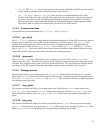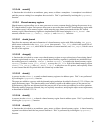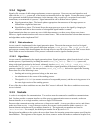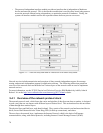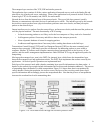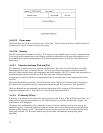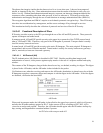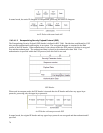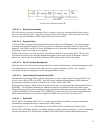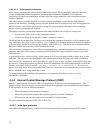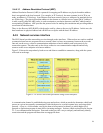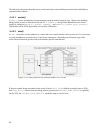The following section introduces Internet Protocol Version 6 (IPv6). For additional information about
referenced socket options and advanced IPv6 applications, see RFC 3542.
Internet Protocol Version 6 (IPv6) was designed to improve upon and succeed Internet Protocol Version 4
(IPv4).
IPv4 addresses consist of 32 bits. This accounts for about 4 billion available addresses. The growth of the
Internet and the delegation of blocks of these addresses has consumed a large amount of the available address
space. There has been a growing concern that someday we will run out of IPv4 addresses. IPv6 was an
initiative to produce a protocol that improved upon the flaws and limitations of IPv4 and flexible enough to
withstand future growth.
This introduction briefly addresses some of the features of IPv6. For further information, see RFC 2460,
which contains the IPv6 specifications.
5.4.3.2.1 Addressing
IPv6 addresses are comprised of 128 bits, providing for more levels of an addressing hierarchy as well as
space for future growth. A scope field has been added to multicast addresses to make for increased
scalability. The scope identifies whether the packet should be multicast only on the link, site, or globally,
which are levels of the addressing hierarchy.
IPv6 also introduces automatic configuration of IPv6 addresses. It uses the concept of network prefixes,
interface identifiers, and MAC addresses to form and configure the host’s IPv6 address. This IPv6 address is
advertised to local IPv6 routers on the link, thus making for dynamic routing.
5.4.3.2.2 IPv6 Header
Some of the fields and options in an IPv4 header were removed from the IPv6 header. This helped to reduce
the bandwidth required for IPv6, because the addresses themselves are larger. IP options are now placed in
extension headers in IPv6. The extension header format is flexible and therefore will be easier to include
additional options in the future. The extension headers are placed after the IP header and before any upper
layer protocol fields.
RFC 2460 defines the following extension headers for IPv6:
• Hop-by-Hop
• Routing
• Fragment
• Destination Option
• Authentication
• Encapsulating Security Payload
IPv6 Header
73



